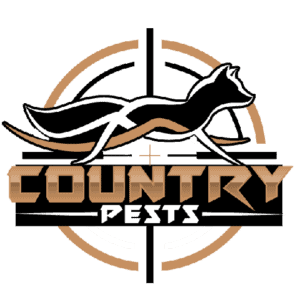As anyone with livestock will tell you, having coyotes in the area will lead to drama and death among your flock or herd. Keeping coyotes controlled and away from your precious animals should be any farmer, homesteader, or suburb homeowner’s prime priority.
In most places, it’s illegal to trap or poison coyotes to keep your livestock safe. When the species comes under pressure, it merely speeds up its breeding rate.
I asked my local park ranger, veterinarian, and animal control experts for answers. They didn’t disappoint.
How do you keep livestock safe from coyotes?
Coyotes are sneaky, so multiple methods to protect your livestock are the most effective. Consider covering fowl at night and keeping lambs and calves in locked sheds with their mothers. Patrolling your buildings and fences for signs of damage is essential if you want a smooth operation on your property.
Other methods include an electrified or hot fence, mesh fences, and roll bars on the top of fences. Using deterrents like removing anything that may attract coyotes is a good start.
But you can also ensure you don’t suffer stock loss by keeping watchdog animals to help keep your herds safe.
How Coyotes Gain Access to Livestock
Coyotes are curious animals and tend to be more scavengers than predators. However, this doesn’t mean they won’t hunt and kill tasty prey animals such as lamb, pet dogs, cats, fowl, calves, and more. They will also go after your pets.
Coyotes will rely on the opportunity to get to your animals if one presents itself to them. If they find an open gate, downed fence, low fence they can jump, or an easy barbed wire fence to crawl under, they will quickly and entirely brazenly enter your property for a quick feast.
It’s vital to check your property regularly for places where coyotes can gain access. I have a weekly routine, and these are what I look out for:
- Note fences that are rusted and brittle or rotten at the bottom.
- Replace missing fence boards.
- Check the roll bars atop your fences and that gates are in working order.
- Clear debris under swing gates to stop gates jarring with a corner open.
- Check that latches close with a pin to prevent easy opening.
- Ensure drainage ditches are not overgrown and that where these run under fences, secure with a grill or mesh cover.
- Check all gates and roads after heavy rains, as mud may wash away, leaving a crawl space.
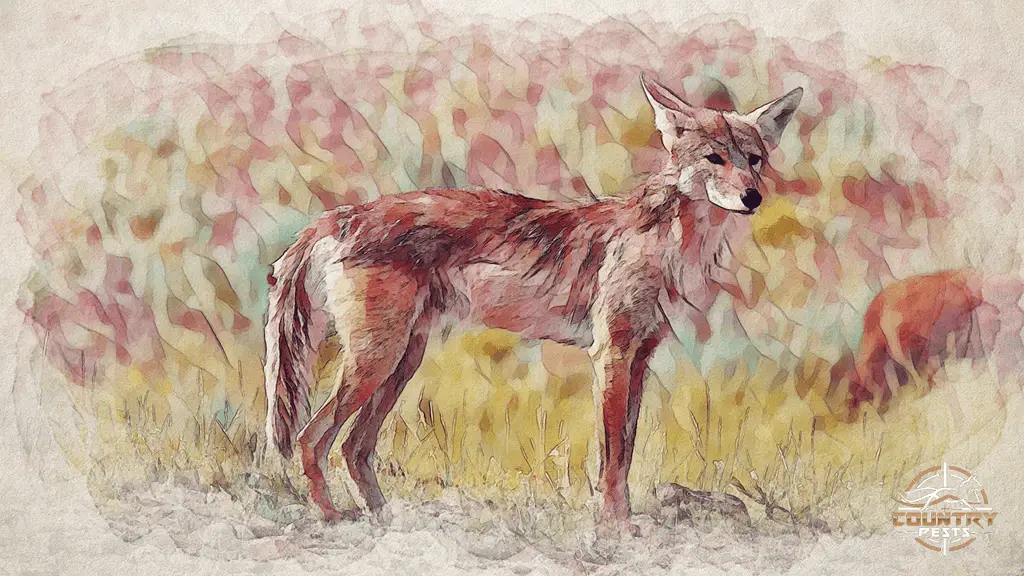
5 Critical Coyote Safety Measures To Keep Livestock Safe
Regardless of what type of livestock you keep, you can take a few general measures to ensure your animals are all secure at night. Coyotes tend to be nighttime hunters.
1. Activity on the Property
Coyotes fear human activity. They don’t like entering a property where there are human smells and things that remind them of people.
While you should take care if you walk about the property at night, you can also ensure there are motion-activated alarms and lights to scare off the coyotes that enter your yard.
2. Enclose Vulnerable Livestock at Night
Sick, old, or very young animals are most vulnerable to a coyote attack.
Keep these animals enclosed in a coyote-proof enclosure close to your home where there is likely the most activity during the day and night.
3. Keep Guard Dogs
Trained guard dogs are ideal for keeping on your property to patrol at night and scare off any curious coyote. Having more than one dog also ensures that the dog won’t be attacked by the coyote as easily.
A starving coyote may still try their luck with a smaller size dog on its own, but when there are three or more dogs, coyotes should move elsewhere.
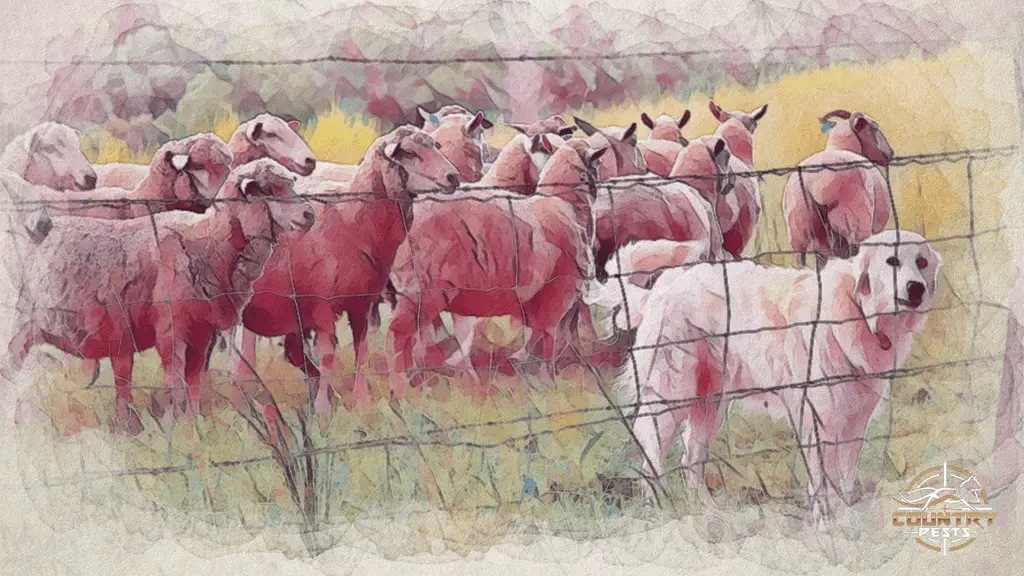
4. Stink’ Em Out
Another general preventive measure to drive coyotes away is leaving containers with ammonia-soaked rags around your perimeter.
Coyotes hate the smell of ammonia, and the strong scent messes with their scent abilities.
5. Remove Cover
Coyotes may appear like little four-legged Rambos, so remove any brush and low-hanging branches near your animal enclosures and perimeter fences. These provide easy spots for coyotes to hide and survey your property at night.
Low branches can also give them an easy way to get across a fence or into your chicken coop if you’re not careful.

Keeping Livestock Safe From Coyotes Per Species
Depending on the type of livestock you keep, you may need to follow slightly different approaches to ensure coyotes don’t make a meal out of your animals.
Check out these guides for ensuring your specific type of animals are coyote safe:
Keeping Goats Safe
Goats, especially miniature goats, are a favorite snack for coyotes. Kiddy goats are small enough to make an easy hunt for coyotes, and coyotes are agile enough to outmaneuver your prized goats and catch them easily.
The usual method of catching goats is to grab them by the throat and cause severe damage with a bite, resulting in the goat bleeding out.
To ensure your goats are safe, consider these methods of keeping them out of coyotes’ reach:
- Bring your goats inside at night, especially when kid goats are young.
- Keep donkeys or llamas with your goats
- Place lights around your goat pasture
- Place electric fencing around your goats’ grazing areas.
Ensuring Chickens and Fowl Stay Safe
Chickens and fowl are also easy prey for coyotes. Since chickens are usually cooped, they don’t have space to hide or run away from predators like coyotes and other wild animals. Special measures may be required to keep your farm birds and fowl safe from predators.
- Ensure all coops are properly fenced with a mesh fence
- Remove brush that may allow coyotes to dig under fences without being seen.
- Place guard dogs and several chicken hutches around
- Hang brightly colored and reflective objects near the chickens at night
- Clean out chicken waste
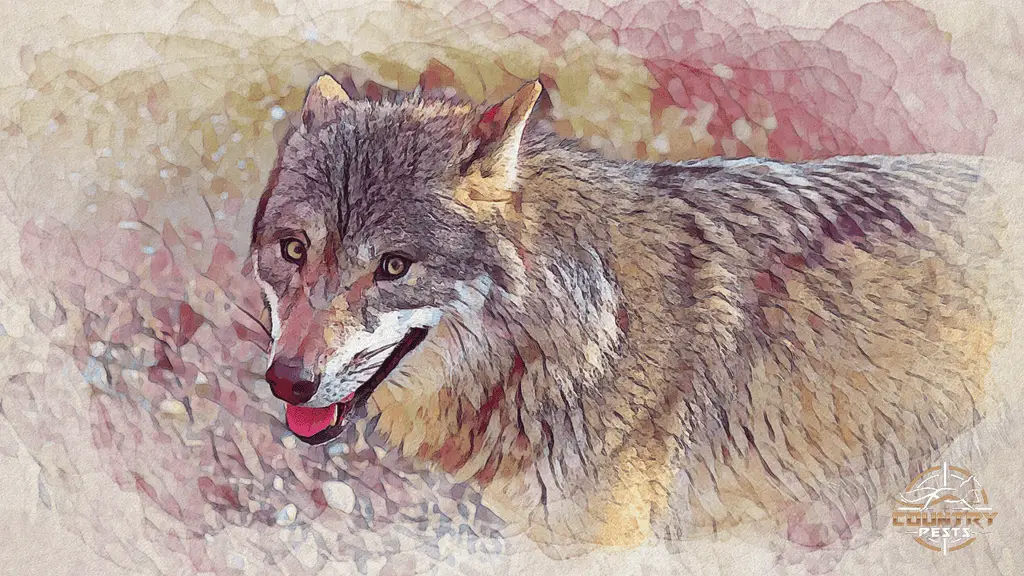
Keeping Your Sheep Safe
Sheep tend to be relatively protected against coyotes in winter when they have a thickened layer of wool as protection against bites. However, when sheep have been sheared in summer, they become vulnerable to bites. Lambs are especially high on coyote hunting lists, and your lambs will have no protection against coyotes.
Coyotes tend to attack the lamb from both the front and back, ripping out the lamb’s throat and tearing open their stomach area. Protect your sheep from coyotes by
- Bringing sheep inside at night ensures their enclosure is protected from coyotes with mesh fencing and a roll bar atop the fences and gates.
- Keep coyotes away from sheep by placing a few plastic bottles drilled with holes and some ammonia along the fences. Spraying the sheep pen with watered ammonia during the day to remove the smell of sheep urine and feces will also help keep coyotes away.
- Hang a few metal windchimes from the enclosure and among any trees in the sheep pasture to help scare off coyotes, as they don’t like sudden sharp sounds like metal clanging together.
- Sheep match up well with a donkey, and donkeys protect the flocks they stay and cohabitate with in pastures. No coyote will be a match for an ill-tempered donkey, so ensure you have a trusty donkey with your flock of sheep.
Protect Your Rabbits from Coyotes
Rabbit breeding is becoming popular, and whether you breed rabbits for the pet market or the meat market, you will have to protect your rabbits from coyotes and other predators.
- Keep rabbits enclosed
- Use concrete floors and hay for a rabbit breeding pen
- Install mesh fencing and hot wiring along the perimeter fence
- Clean hutches and dispose rabbit waste
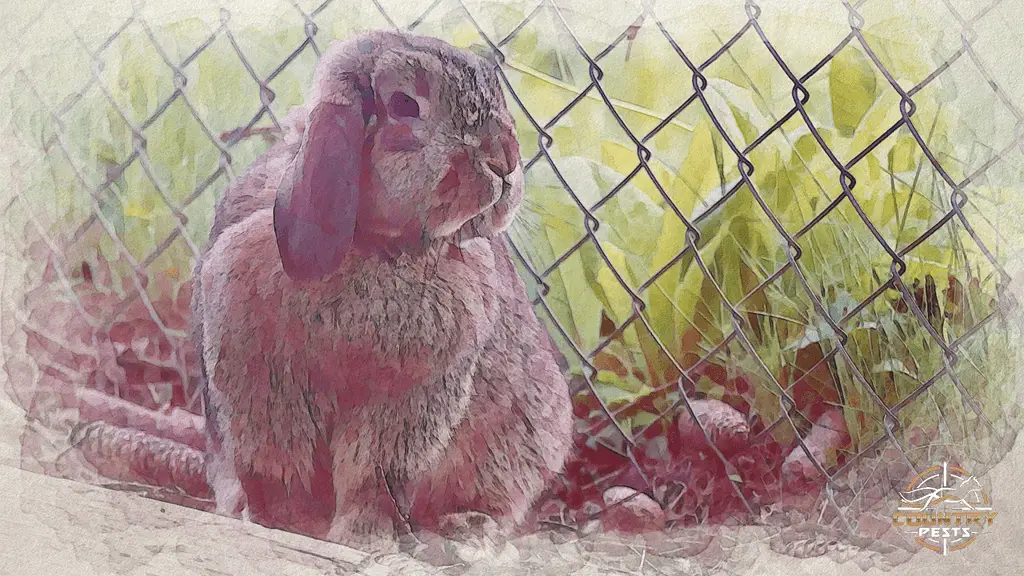
Ensuring Your Calves Are Coyote Safe
Calves are the other young animal at the top of a coyote’s hunt list. Coyotes tend to go for already dead animals, but they will happily slaughter an unattended calf if they get the opportunity.
In the wild, the cow has horns with which she can defend her calf, but modern cows are usually dehorned, making them easier to handle but also leaving them defenseless. To protect your calves from coyotes,
- Hotwire all pastured areas where you keep cows
- Bring cows and young calves in at night
- Keep a donkey with your cows
- Pasture young calves and cows near the homestead
The Best Overall Coyote Deterrent and Protection for Your Livestock
Finally, the best overall protection for your livestock from coyotes is to be alert and vigilant. Patrol your land, inspect fences, and repair any areas that could provide access to a coyote.
If you keep a guard dog or more, ensure they are trained to come when called, and when your dog barks, check on them during the night.
Spend the time to bring your livestock in and keep them in sheds at night where they are better protected from predators. Keeping livestock is hard work, but it comes with the territory, so be proactive, and you won’t lose animals to predators.

FAQs
Why killing coyotes doesn’t make livestock safer?
In a hierarchy system such as that coyotes follow, the death of a pack leader will cause more breeding among the remaining females, and more of the pups will survive, whereas the leader would have killed pups from rival coyotes. The result of killing a coyote may increase the overall number of coyotes.
Can a coyote take down a cow?
Coyotes are more likely to kill calves, which are smaller and easier prey. Coyotes may also maim a cow or calf if they don’t kill them. Often, the injuries are so severe that euthanizing is the only course of action you can take.
What are coyotes afraid of?
Coyotes tend to fear sudden noises, loud shouting, sirens, bright flashing lights, the scent of other predators, such as dogs, and sudden motion, such as sprinkler systems.
Conclusion
Coyotes are very cautious but clever predators. They would rather play it safe and feast on carrion or animal waste. However, they attack livestock, especially the old, young, and sick among a herd or flock. To protect your livestock, you need to think like a coyote.
Follow methods of protection that avoid placing your animals in confrontation with coyotes.
Bring your stock into sheds at night, lock secured coops and hutches to keep smaller animals safe, and patrol with a couple of guard dogs at night.
Use technology to keep your livestock safe. Motion-triggered lights, sirens, sprinklers, and even spraying ammonia around your livestock pens are viable options. Being alert and prepared are the best forms of defense.
Remember that shooting a coyote is illegal in most U.S. states. Contact your local park and wildlife authorities to help you trap any coyotes that are culling your herds.
